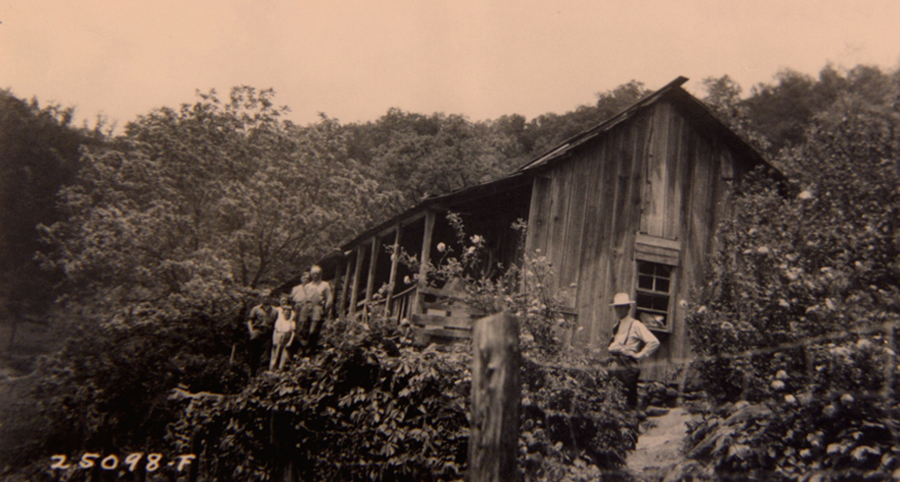 North Shore Heritage Memories
North Shore Heritage Memories North Shore Heritage Memories
North Shore Heritage MemoriesFirst Settlers and Lost Graveyards North Shore Great Smoky Mountain National Park
In the 1830's the trade trails in the western part of the park near Cades Cove expanded over the mountain to North Carolina near Ekaneetlee on Eagle Creek N.C, on up to the top of the mountain in hopes to bring more settlers to Tenn; from North Carolina and to improve roads (wagon trails) in Tenn; and North Carolina. This trail or (wagon trail) probably would have been along the same trail (wagon road) that the Indians used when they were forced off their land years earlier. The trail went down pinnacle and all the way down Hazel Creek.
This road if finished into North Carolina would raise land value or just because of the road would make land more attractive to other settlers in N.C. so in the 1830's William Anderson and several others bought 1,100 acres of land near the top of the mountain at Eagle Creek for $55. This same land in the very early 1800's sold for around 5 cents an acre because it was so high on the mountain on Eagle Creek it was not much for farming. This was the cheapest land bought from the Cherokee.
William Anderson was given credit for bringing religion and education to the area, while Robert McCampbell and family was credited for the mineral wealth to the area. If you walk even high on the mountain today you might see the old remains of some old cabins left from as far back as 1800's.
Eagle Creek hit it's boom when logging came in around early 1900's when Montvale Lumber Co started. Even at that time only around 7 families live on Eagle Creek: the Crisp family, Cook family, Myers family and Proctors family and the rest of the Myers family, and the Welch family and Quill Rose and his wife Visey Rose. Quill was noted for being one of the best fisherman and the best moonshiner in the area, Rose also had a grist mill and a blacksmith shop and had his on way to forced air on the fire not with a bellous but air blow by a fan using a water wheel and a hollow pipe. With the lumber companies coming to Eagle Creek population increased on Eagle Creek as did on other creeks up and down the Little Tennessee River. Camps and settlements were formed up and down Eagle Creek and follow the logging up the creek, some logger and there family lived in a make shift houses made on train box cars. A fixed cemetery was never establish on Eagle Creek but people were buried in out of the way places on a mountain ridge (now called primitive cemeteries according to the Park Service.) In about 1923 the logging was about over, after cutting sawing and shipping 108 million board ft. of lumber from Eagle Creek the Montvale Lumber Co. left.
Copper was discovered around 1850 by Mr. Post while looking for Gold, he hand drew maps of the area. Montvale lumber knew of the copper but they only wanted the timber from the area. In 1906 H. B. Laney geologies for North Carolina explore the area for copper. First the Fontana mining Co. was formed and two men were killed in the mine then it was closed for a while. Then the North Carolina Exploration Co. operated the mine until it closed in 1943 with the creation of Fontana Dam. When the mine closed down it was producing copper around 35% copper, the mine was 2000 ft. deep and ran on a 45 degree angle, enough gold was found on the first level to pay the operations of the mine there was 18 levels to the mine. The Cherokee knew of the copper and used it in its pure state for ornaments long before the white setters came to the area.
Put together by
David Monteith